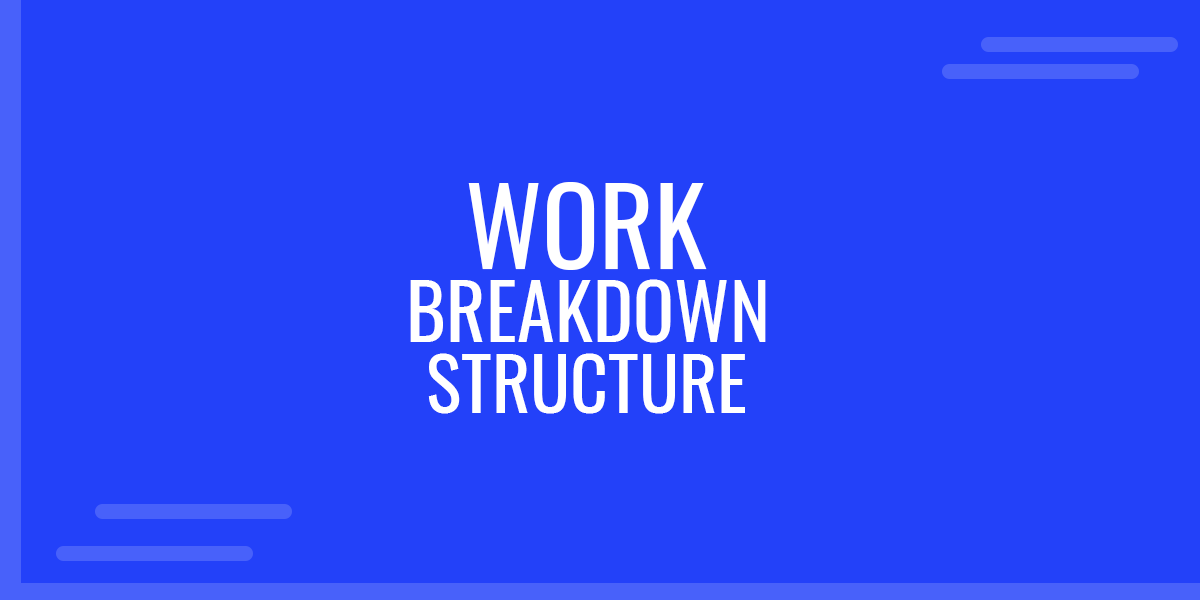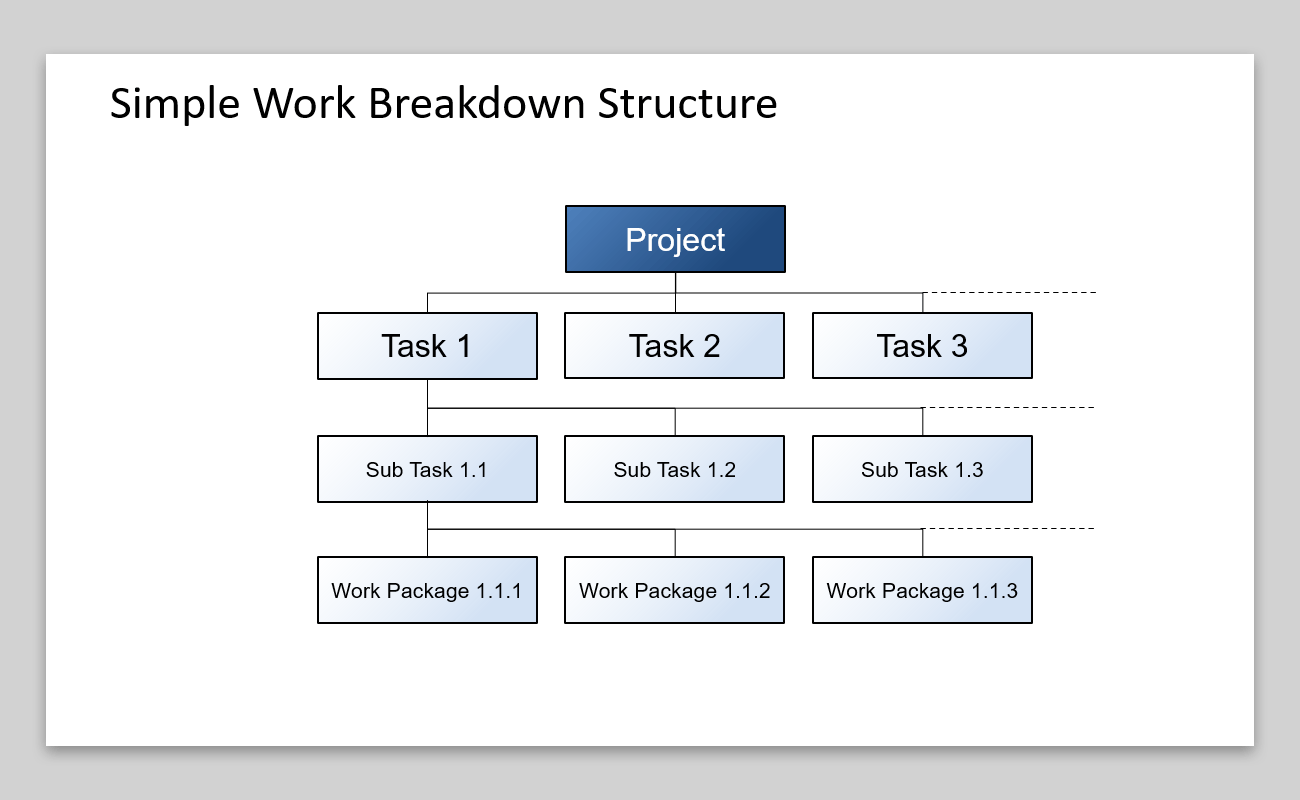Work Breakdown Structure – Quick Guide on WBS

Project managers use a variety of tools to manage projects. One of the most commonly used tools is the Work Breakdown Structure (WBS). If you are managing a project of any significant scale, the chances are you would need to create a Work Breakdown Structure. But what is Work Breakdown Strture when it comes to the fine parameters associated with the tool and how do you use it to manage projects? See our explanation below to find out!
What is Work Breakdown Structure (WBS)?
Breakdown Structure or WBS is a tool used in project management, as well as system engineering to organize work in a set structure to break it down into smaller components. It is used to articulate the scope for a project, making the project manageable for teams. A Work Breakdown Structure is used for planning, cost estimates, execution, and controlling a project to prevent it from going off track.
Using WBS, a complete project’s tasks are divided into work streams, separating the project into different levels of work until the lowest hierarchy is reached in the structure with individual tasks or activities.
Different Levels of Work Breakdown Structure (WBS)
A Work Breakdown Structure can be divided into 4 Levels. While essentially it consists of mainly 3 levels, the top-level or Level 0 defines the title.
Level 0: This is the project title and explains the project in its entirety, an example of a Level 0 title might include something like ‘Development of PowerPoint E-Learning Courses for Company X’.
Level 1: This defines the controls, or the main phases of the project laid out at the top. It includes key deliverables, parts, features to meet the expectations of the customer or stakeholders.
Level 2: This level breaks the key deliverables into smaller, more manageable tasks or work packages.
Level 3: This accounts for the key activities needed to complete the project.
Commonly Used Terms Associated with Work Breakdown Structure (WBS)
Some of the most commonly used terms related to WBS include the following:
Acceptance Criteria: This implies the standards to be achieved according to customer or stakeholder requirements.
Phases: In WBS phases include the different stages identified for managing the project. This might include stages such as product design, development, and launch.
Milestones: In WBS milestones are the different critical stages over the course of the project. A few examples can include, product design, product testing, product launch, etc.
Deliverables: This is the result of various stages of work to deliver goods or services. For example, for a project associated with making an e-commerce website, the deliverables might include the website design, written content, menus, a functional shopping cart, etc.
How to Create a Work Breakdown Structure (WBS)?
When Creating a Work Breakdown Structure, you can follow a number of steps to ensure you are on the right track.
1. Clearly Define the Project
As a project manager, you would want to gather critical information to start planning and managing the project. Some projects might not require too much work to define their scope, however, others might require going back and forth to scale WBS. For example, a project for the development of an e-commerce portal might be more straightforward to define in terms of scope as compared to a project for the development of a customer data protection platform, which might include a number of financial and legal considerations.
At the top of your WBS is the name of the project. This in its entirety is everything associated with the project in a nutshell. Such as the name of the project (project title) written at the top of the chart. As mentioned earlier, this is also called Level 0.
2. Identify Level 1 Components
Level 1 is essentially the organizing principle for WBS to decompose the deliverables. This can include a few of the top deliverables or the stages or phases of the project that are thematic in nature. In other words, Level 1 sets the major workstreams for your project.
4. Decompose Level 1 Components
The decomposition of Level 1 entails dividing it further to create Level 2 and Level 3 of your WBS.
5. Identify Team Members
You will need to identify team members to determine who will complete which task to make your WBS more cohesive.
6. Visualize Your WBS

Finally, create a Gantt chart to visualize your Work Breakdown Structure. For this purpose, you can also use templates such as the Free Simple Work Breakdown Structure Diagram for PowerPoint or this WBS Template. You can also use these project management software to visualize WBS.
Example of Work Breakdown Structure
The following video shows an example of WBS and how you can construct and visualize it.
Work Breakdown Structure Rules
It is important to keep a few rules in mind when making your Work Breakdown Structure.
100% Rule
The 100% rule in WBS entails that the budget and work allotment for deliverables must always equal to 100%, and that too in a hierarchical manner.
Mutually Exclusive
Since no milestone can appear more than once in WBS, the deliverables and sub-deliverables need to be mutually exclusive. This is meant to avoid duplication.
Outcomes
The outcomes or milestones in WBS are critical. You might find WBS a little vague when it comes to very specific activities but rather more focused on the results. This is why milestones need to be carefully mapped out.
3 Levels
WBS primarily has 3 levels. You will have your key deliverables at Level 1, followed by the decomposition of key deliverables at Level 2, and Level 3 with the sub-deliverables or activities needed to complete the project.
8/80 Rule
In WBS, a work package, which is the work required to complete a deliverable, should not take less than 8 hours or more than 80 hours over a 10-day period. This 8/80 rule means that work packages that require less time need to be coupled with other deliverables to match the 8/80 rule.
Final Words
WBS is used widely by project managers to manage simple to complex projects. WBS allows properly defining the project and its scope, breaking down work into manageable chunks, and focusing on outcomes to ensure the key deliverables are properly aligned to create the end product.
